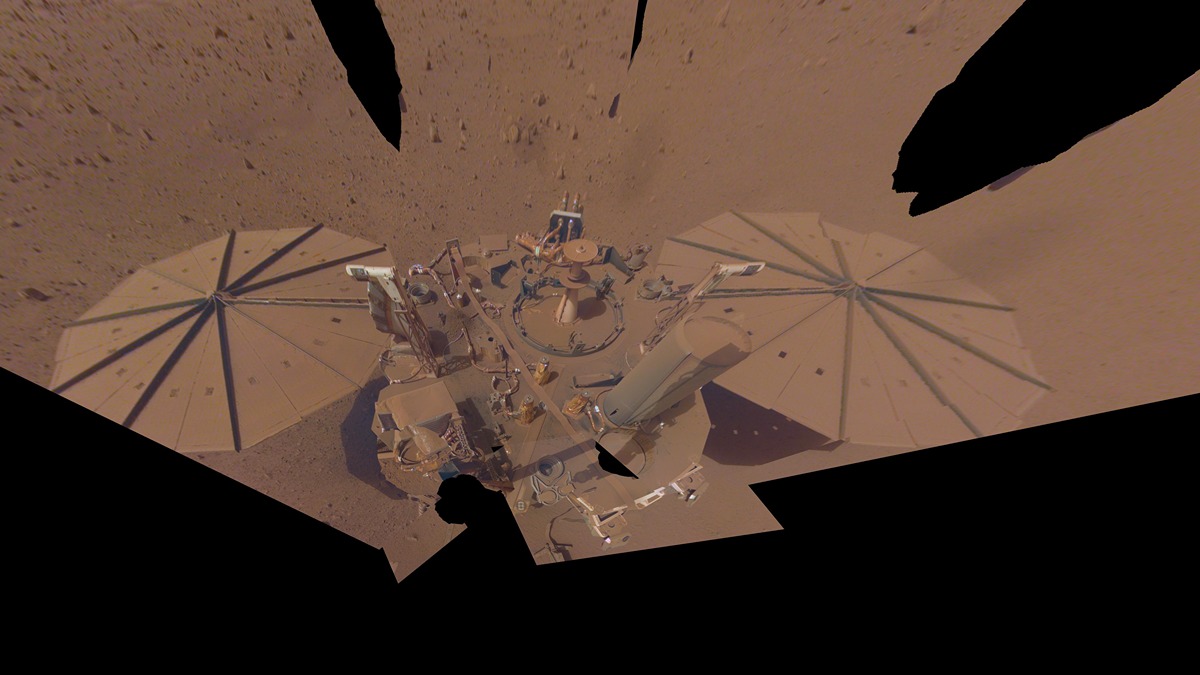NASA's Mars InSight lander will risk earlier shut down to squeeze out a little more science
The seismometer might keep working through September.

NASA's InSight mission is working to squeeze out all the science it can as power runs out.
The solar-powered InSight lander is only working at about one-tenth of its landing capacity of 5,000 watt-hours and had expected to shut off its seismometer — its last operational science instrument running on dwindling power supplies — in June.
However, the mission team plans to program InSight to allow the seismometer to operate "perhaps until the end of August or into early September," according to a Tuesday (June 21) update from NASA's Jet Propulsion Laboratory (JPL) in California, which operates the mission.
"InSight hasn't finished teaching us about Mars yet," Lori Glaze, director of NASA's Planetary Science Division, said in the statement. "We're going to get every last bit of science we can before the lander concludes operations."
Related: NASA's InSight lander detects the biggest quake on Mars yet
The decision reflects a tradeoff, and NASA officials were forced to choose between keeping charge in the lander's batteries later into the year and getting more data from the lander's seismometer in hopes of detecting more marsquakes.
To keep the seismometer operating longer, the mission team plans to turn off the spacecraft's fault protection system. However, that decision carries some risk and may mean the seismometer turns off unexpectedly and before power runs out entirely.
Get the Space.com Newsletter
Breaking space news, the latest updates on rocket launches, skywatching events and more!
"It leaves the lander unprotected from sudden, unexpected events that ground controllers wouldn't have time to respond to," JPL officials wrote in the press release. Mars is several minutes' radio communication distance from Earth, meaning it's impossible for controllers to respond instantly to events on the Red Planet.

The lander touched down in 2018 for what was expected to be nearly two Earth years (one Martian year) of science, and has been extended due to its successful work in assessing the Red Planet's interior and measuring marsquakes.
The solar panels have no system to clear off dust, with InSight relying on lucky winds or passing dust devils. Engineers did take off a bit of dust in 2021 by drizzling sand on the lander and allowing wind to blow that sand across a solar panel, however, the technique wasn't enough to save the lander as winter and the dust storm season took hold.
Now, NASA has determined that the best approach for InSight's last few weeks of work on the Red Planet is to prioritize science over energy conservation.
"The goal is to get scientific data all the way to the point where InSight can't operate at all, rather than conserve energy and operate the lander with no science benefit," Chuck Scott, InSight's project manager at JPL, said in the statement.
You can track InSight's falling power supplies on the mission's NASA blog.
Follow Elizabeth Howell on Twitter @howellspace. Follow us on Twitter @Spacedotcom and on Facebook.
Join our Space Forums to keep talking space on the latest missions, night sky and more! And if you have a news tip, correction or comment, let us know at: community@space.com.

Elizabeth Howell (she/her), Ph.D., was a staff writer in the spaceflight channel between 2022 and 2024 specializing in Canadian space news. She was contributing writer for Space.com for 10 years from 2012 to 2024. Elizabeth's reporting includes multiple exclusives with the White House, leading world coverage about a lost-and-found space tomato on the International Space Station, witnessing five human spaceflight launches on two continents, flying parabolic, working inside a spacesuit, and participating in a simulated Mars mission. Her latest book, "Why Am I Taller?" (ECW Press, 2022) is co-written with astronaut Dave Williams.
